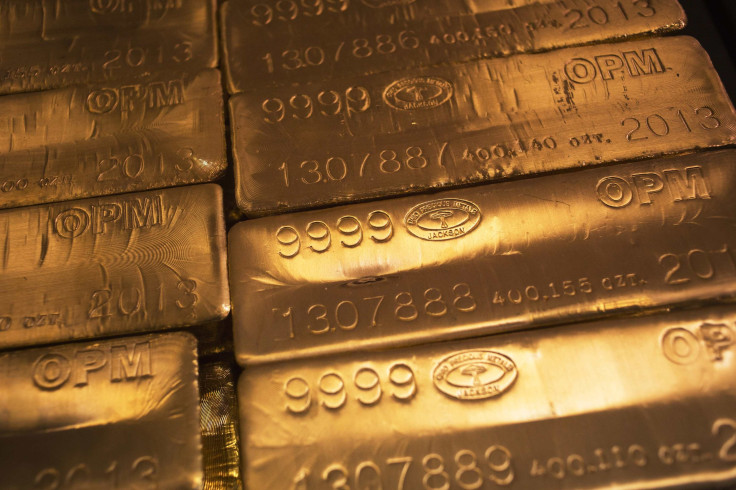Gold Plunges To Five-Year Lows After Early Asia Rout

Gold prices plunged more than 4 percent to five-year lows on Monday as a sudden bout of selling across Shanghai and New York markets during the illiquid early Asian trading hours triggered a mini flash crash, deepening bullion's biggest rout in years.
A wave of sell orders in a one-minute period shortly after the Shanghai Gold Exchange opened on Monday sent the most-active U.S. gold futures contract GCv1 down $48 to as low as $1,080 per ounce, its weakest since February 2010.
Within two minutes, an estimated 33 tonnes of gold in Shanghai and New York worth $1.3 billion changed hands. A lack of liquidity, with Japanese markets closed for a holiday, hastened the slide.
The ferocious selling triggered CME circuit breakers twice within one minute just before 9:30 p.m. EDT (0130 GMT) on Sunday.
The exact cause of the selling was not immediately known, but traders and analysts attributed the massive move to high-frequency trading algorithms as well as stop-loss selling.
"It was just a bit of a bear raid and there was nobody on the other side to mop up the selling," Societe Generale analyst Robin Bhar said.
Prices recouped some losses by the end of trading in New York, but the latest slide helped wipe out half the gains from the last decade's historic bull run, taking prices back to a key chart level and threatening a break towards $1,000 an ounce.
The breadth of the latest sell-off will underscore bullion's worsening outlook as the dollar .DXY strengthens and investors brace for the U.S. Federal Reserve to raise interest rates for the first time in nearly a decade.
The dollar hit a three-month high against a basket of currencies, making dollar-priced gold more expensive for holders of other currencies.
The selling followed China's Friday announcement that it increased its gold reserves much less than expected over the past six years.
Ross Norman, chief executive of bullion brokerage Sharps Pixley, said the narrow window of selling suggests this was a deliberate effort to short the market and had nothing to do with market fundamentals.
"They weren't looking for the best price, they were looking for the biggest impact," he said.
Spot gold prices XAU= were 2.8 percent lower at $1,102.05 an ounce by 3:54 p.m. EDT (1954 GMT), down for the sixth straight session, after falling as far as $1,088.05 an ounce, the lowest since March 2010.
The U.S. August gold futures GCv1 contract settled down 2.2 percent at $1,106.80 an ounce.
Technically, the break through the $1,130 support level leaves bullion looking weak. In the short term, supports are at $1,085 and $1,050, ANZ said.
Turnover in Shanghai and New York were tremendous. A record 3.3 million lots traded on a key contract XAU9999=SGEX on the Shanghai Gold Exchange, compared with fewer than 27,000 lots on Friday, Reuters data showed. Before Monday, the volume for July had averaged fewer than 30,000 lots.
Spot platinum XPT= fell for the fifth straight session, paring losses after dropping 5 percent to a fresh 6-1/2-year low of $942.49 an ounce, due to oversupply, sluggish demand and weaker gold prices, which encouraged speculative selling.
Palladium XPD= dropped as much as 3.4 percent to its lowest since October 2012 at $593 an ounce, before cutting some losses to trade down 1.3 percent at $606.
Spot silver XAG= was down 0.7 percent at $14.76 an ounce.
© Copyright IBTimes 2024. All rights reserved.




















